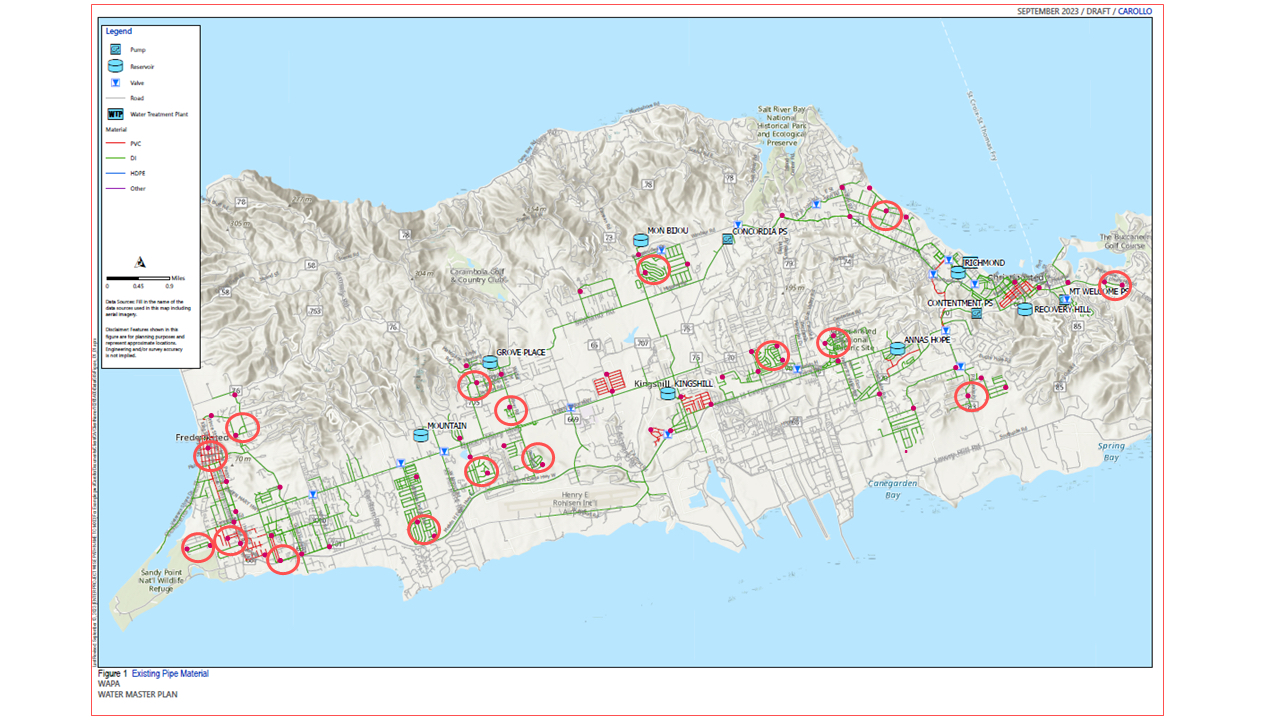
Tap water in parts of St. Croix was returning to its normal color, residents reported Tuesday, while local and federal experts tested pipes to discern the reddish-brown water’s chemical makeup.
Employees of a Christiansted-area hotel hoped the discolored water would be gone soon. Guests were complaining their toilet water was frequently brown and sometimes the sink water. Worse problems plagued the laundry area. The hotel had to replace red-brown stained linens, an employee said.
But the problem wasn’t everywhere. The kitchen sinks seemed to be spared, said employees who asked neither they nor the hotel be identified.
Water and Power Authority officials had said summer drought conditions dried cisterns, putting extra load on aging municipal water infrastructure and dislodging sediment as use increased. It could take 20 years to replace 200 miles of 60-year-old pipes, said Andrew Smith, WAPA’s chief executive.
The uneven distribution of discolored water came from the gravity-fed system, meaning people at the ends of the lines or at higher elevations were more likely to see brown water.
But restaurants, shops, and hotels across St. Croix reported improving conditions as they switched back to cisterns recently filled by heavy seasonal rains.
As WAPA flushes the pipes to remove sediment, its testing experts and counterparts from the University of the Virgin Islands and the Department of Planning and Natural Resources were in the field collecting water samples. The fluids will be analyzed for bacteria, pH, chlorine levels, phosphate, iron, and turbidity — or overall clarity.
UVI conducted bacteria tests and collected samples that were sent to an Environmental Protection Agency lab in New Jersey — where they’ll be tested for 13 metals monitored by EPA National Primary Drinking Water Regulations.
WAPA hoped to have the results back in two weeks or less. In the meantime, WAPA plans to hold “an information session” in front of Fort Frederik Wednesday from 10 a.m. to 1 p.m., providing explanatory handouts and answering customer questions and water concerns.
But the same storm conditions that refilled cisterns across the territory, taking pressure off aged pipes, also strained WAPA’s fragile power grid. Tropical Storm Philippe was blamed for plenty of isolated outages as well as a near-complete island-wide blackout in St. Thomas and much of St. John most of Oct. 5.
While customers fumed in the dark, WAPA officials found a bright side. With all the power turned off, WAPA was able to cold start their new Wartsila generators. This so-called “black start” helped alleviate the blackout conditions as well as give WAPA personnel a real-world test of how the generators work in such conditions.
Smith, in a written statement Tuesday, was pleased.
“While understandably frustrating for our customers, the silver lining of the last week is actually quite monumental for the St. Thomas – St. John district, as significant progress was made towards establishing generation redundancy for customers,” the WAPA CEO said. “The lessons learned during this first ‘black start’ of the new Wartsilas will significantly reduce the turnaround time of future restoration efforts.”


